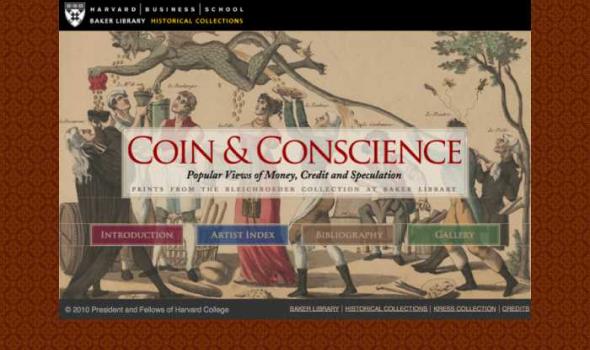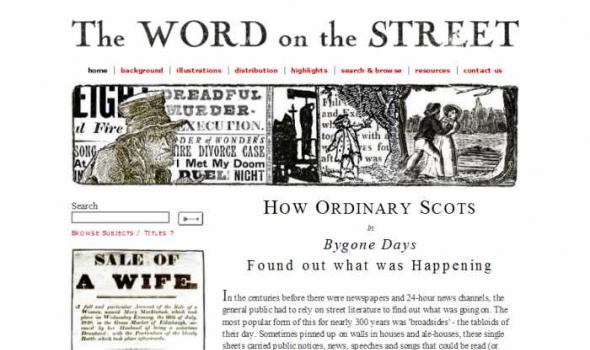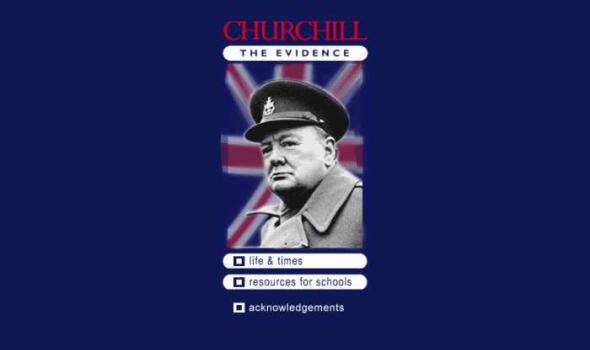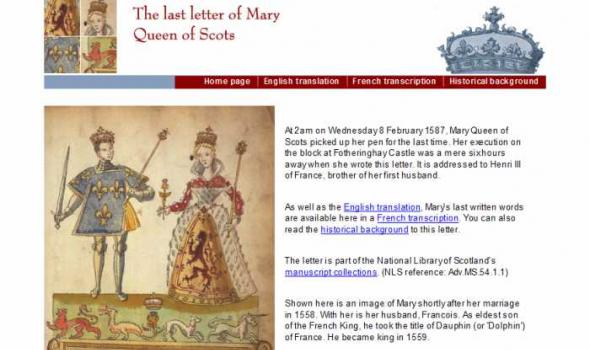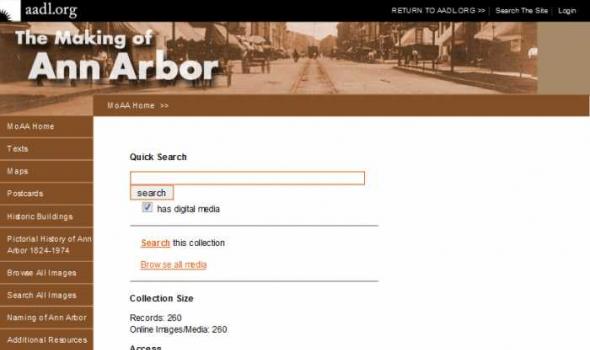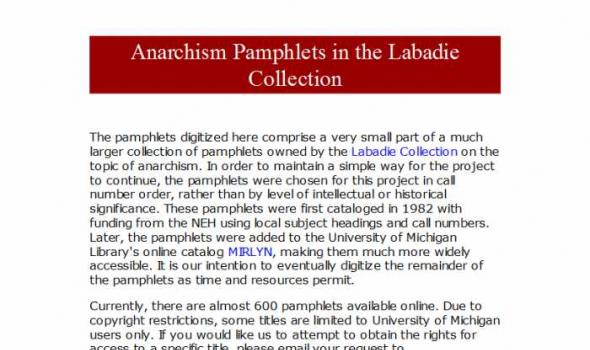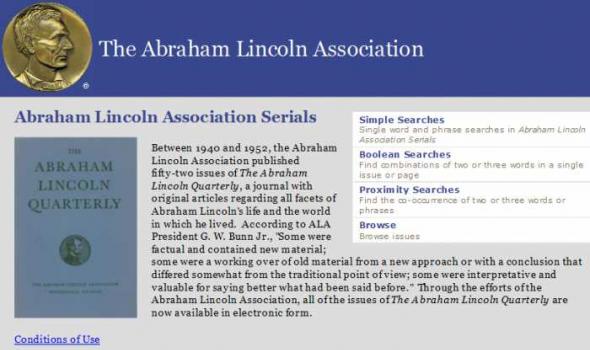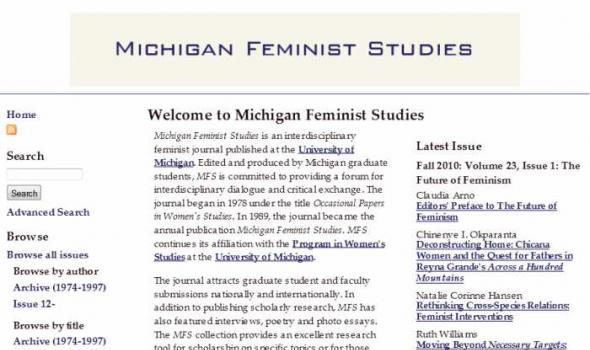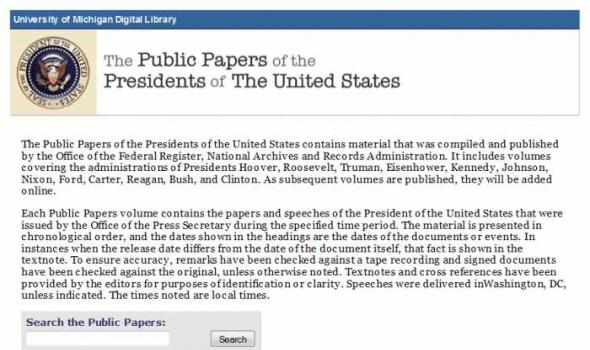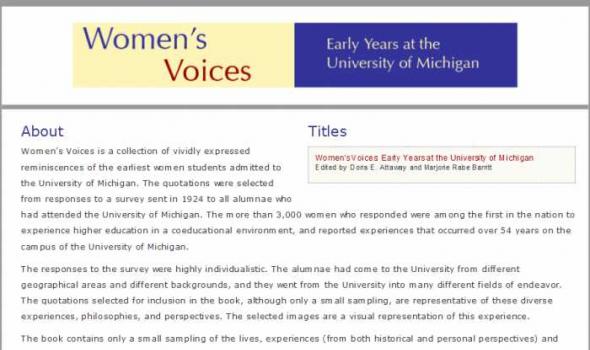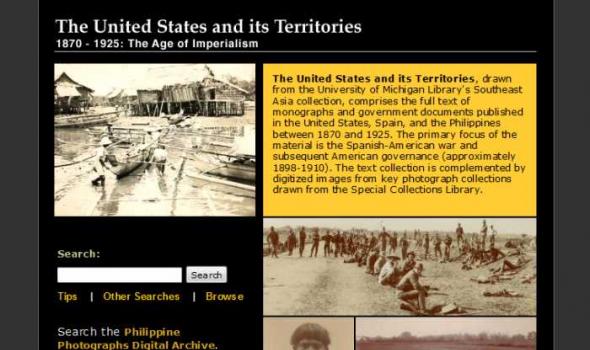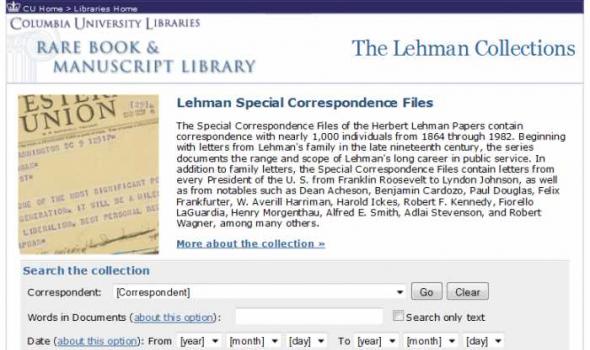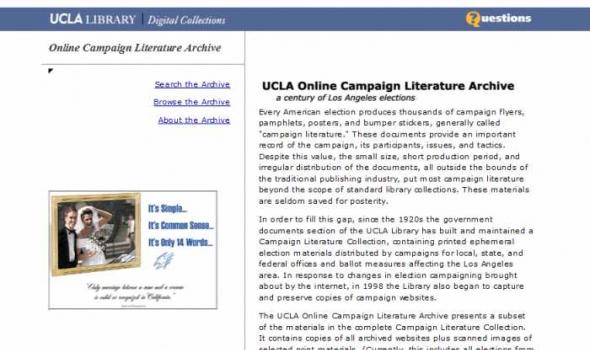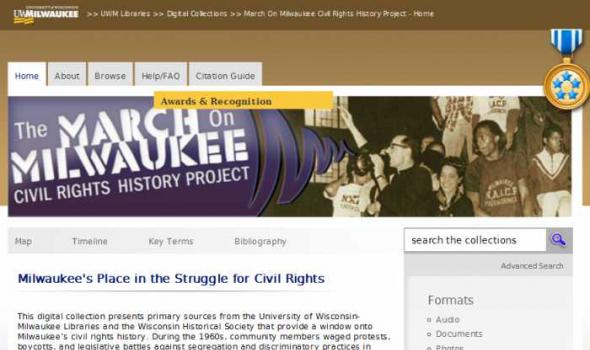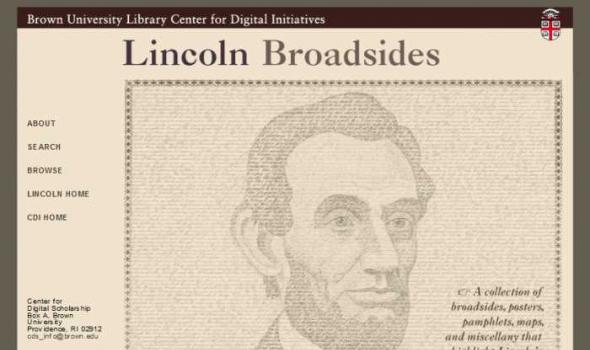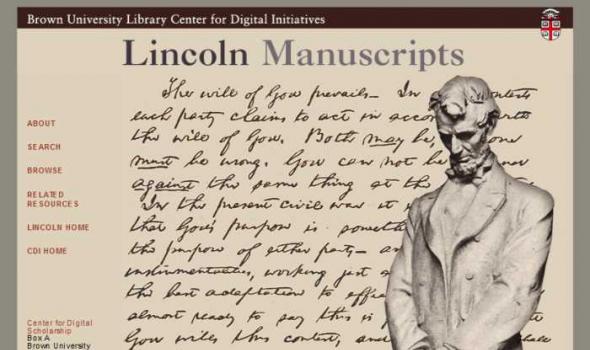Political Science & Politics
Introduction Online Exhibition In 1986, Baker Library issued an exhibition catalog titled Coin and Conscience: Popular Views of Money, Credit and Speculation: Sixteenth through Nineteenth Centuries. Catalog of an Exhibition of Prints from the Arnold and S. Bleichroeder Collection, Kress Library of Business and Economics, written by Ruth Rogers, then curator of the Kress Library at Baker Library. The images selected by Ms. Rogers for inclusion in the catalog represent the major thematic divisions of the Bleichroeder Collection , while also displaying its geographic and stylistic diversity. The publication provides introductory text, detailed descriptive information about seventy prints from the collection, an artist index, and a bibliography for further study.
About the Collection As part of its holdings of legal art and visual materials , the Harvard Law School Library owns a collection of over 4000 portrait images of lawyers, jurists, political figures, and legal thinkers dating from the Middle Ages to the late twentieth century. Although most of these prints, drawings, and photographs depict legal figures prominent in the Common Law, a significant number portray jurists and legal educators associated with the Canon and Civil Law traditions.
Related Reading: A complex network of intersecting financial, legal, political, and cultural factors all contributed to the development of the South Sea Bubble, the eventual collapse of the South Sea Company in 1720, and the financial ruin left in its wake. The years leading up to the South Sea Bubble were a time of financial promise and enthusiasm for Britain. Following the War of Spanish Succession (1701-1714), there was the increased potential of foreign trade and the turn toward a more global marketplace. Wealth and luxury were no longer reserved to the aristocracy. Consumerism was on the rise, and class and gender boundaries were increasingly blurred when it came to investing in the stock market.
Though it is a relatively recent field of study, women's history is inscribed across all of the Harvard Library holdings gathered since 1638. By examining those holdings afresh and querying them in a new and feminist light, the curators of Women Working have aggregated thousands of items that illuminate women's history. The result is a unique, virtual collection, comprising over 650,000 individual pages from more than 3,100 books and trade catalogs, 900 archives and manuscript items, and 1,400 photographs. Women Working, 1800–1930 is a digital exploration of women's impact on the economic life of the United States between 1800 and the Great Depression.
About the Emma Goldman Papers Project The Emma Goldman Papers is part of a national initiative to retrieve the papers of individuals whose life work has had a lasting impact on the course of American history. Since 1980, the Emma Goldman Papers Project at UCB has collected, organized, and edited tens of thousands of documents from around the world by and about Emma Goldman (1869-1940), a leading figure in American anarchism, feminism, and radicalism. In the spirit of Emma Goldman, the EGPP has extended its scholarly research to serve the community-to educate the public about the complexity of engagement in social and political transformation.
Historical Context The Great Depression and the World Wars were the major historical influences on Americans between 1933 and 1945. The 1929 stock market crash had left 13 million people unemployed and 2 million homeless. A documentary of the period would have revealed Hoovervilles, dust storms, labor union strikes, violent farmers protesting foreclosures and unarmed WWI Vets marching on the White House for their promised bonuses, only to be met by U.S. Army tanks. Adolf Hitler Geburtstagfeier. (Birthday Celebration) Los Angeles, April 20, 1935 In 1933 Adolf Hitler became the head of Germany's Third Reich and Franklin Delano Roosevelt entered the Oval Office. In the United States, the New Deal brought hope for recovery.
In the centuries before there were newspapers and 24-hour news channels, the general public had to rely on street literature to find out what was going on. The most popular form of this for nearly 300 years was 'broadsides' - the tabloids of their day. Sometimes pinned up on walls in houses and ale-houses, these single sheets carried public notices, news, speeches and songs that could be read (or sung) aloud.
The National Library of Scotland's online collection of nearly 1,800 broadsides lets you see for yourself what 'the word on the street' was in Scotland between 1650 and 1910. Crime, politics, romance, emigration, humour, tragedy, royalty and superstitions - all these and more are here.
A GUID Cause, The Women's Suffrage Movement in Scotland - Their struggles for change withing society About This resource will help you to discover more about the history of the women's suffrage movement in Scotland by exploring and investigating archive sources from the National Library of Scotland's collections. Developed by teachers The projects and learning activities have been developed by teachers specifically for use by secondary school pupils and teachers. The activities support the outcomes, experiences and capacities outlined in the Curriculum for Excellence. Activities and research The sources section contains a selection of archive material, including photographs, newspaper articles and diary entries, which help tell the story of women's suffrage in Scotland.
This exploration of the life of Sir Winston Churchill has been created by the National Library of Scotland and the Churchill Archives Centre, and is based on a major exhibition in the National Library of Scotland in the summer of 1999. It uses original documents and photographs to tell the story of one of the twentieth century's most important figures.
At 2am on Wednesday 8 February 1587, Mary Queen of Scots picked up her pen for the last time. Her execution on the block at Fotheringhay Castle was a mere six hours away when she wrote this letter. It is addressed to Henri III of France, brother of her first husband.
As well as the English translation, Mary's last written words are available here in a French transcription. You can also read the historical background to this letter.
The letter is part of the National Library of Scotland's manuscript collections. (NLS reference: Adv.MS.54.1.1)
Shown here is an image of Mary shortly after her marriage in 1558. With her is her husband, Francois. As eldest son of the French King, he took the title of Dauphin (or 'Dolphin') of France. He became king in 1559.
Propaganda – A Weapon of War is a small snapshot of Second World War propaganda that can be found in the National Library of Scotland’s collections.
Between 1939 and 1945, both Allied and Axis Governments greatly influenced wartime behaviour and attitudes through propaganda. This took various forms: the printed word and pictorial leaflets, radio broadcasts and cinema and poster campaigns.
White propaganda was mostly practical information intended for the Home Front. Black propaganda targeted enemy morale, and there was a strong Scottish involvement in the clandestine organisation that developed it – the Political Warfare Executive.
On this website you'll find examples of British Government propaganda, from 'Make do and Mend' to 'Tag und Nacht'.
Introduction The Ann Arbor District Library, the University of Michigan University Library and the U-M’s Bentley Historical Library have entered into a partnership to create The Making of Ann Arbor, an online, public website on the history and development of the Ann Arbor community. MOAA is an illustrated narrative about Ann Arbor from its pioneer days when it was part of Michigan Territory to the early twentieth century. The project draws upon the three libraries’ resources and the expertise of all three partners to build a website of interest to the citizens of Ann Arbor. In addition to the illustrated narrative history of our city, the website has a searchable image database, including many photographs and other visual images not used in the narrative.
The pamphlets digitized here comprise a very small part of a much larger collection of pamphlets owned by the Labadie Collection on the topic of anarchism. In order to maintain a simple way for the project to continue, the pamphlets were chosen for this project in call number order, rather than by level of intellectual or historical significance. These pamphlets were first cataloged in 1982 with funding from the NEH using local subject headings and call numbers. Later, the pamphlets were added to the University of Michigan Library's online catalog MIRLYN , making them much more widely accessible. It is our intention to eventually digitize the remainder of the pamphlets as time and resources permit. Currently, there are almost 600 pamphlets available online.
Abraham Lincoln Association Serials Between 1940 and 1952, the Abraham Lincoln Association published fifty-two issues of The Abraham Lincoln Quarterly , a journal with original articles regarding all facets of Abraham Lincoln's life and the world in which he lived. According to ALA President G. W.
Fall 2010: Volume 23, Issue 1: The Future of Feminism Michigan Feminist Studies is an interdisciplinary feminist journal published at the University of Michigan . Edited and produced by Michigan graduate students, MFS is committed to providing a forum for interdisciplinary dialogue and critical exchange. The journal began in 1978 under the title Occasional Papers in Women's Studies . In 1989, the journal became the annual publication Michigan Feminist Studies . MFS continues its affiliation with the Program in Women's Studies at the University of Michigan . The journal attracts graduate student and faculty submissions nationally and internationally. In addition to publishing scholarly research, MFS has also featured interviews, poetry and photo essays.
The Public Papers of the Presidents of the United States contains material that was compiled and published by the Office of the Federal Register, National Archives and Records Administration. It includes volumes covering the administrations of Presidents Hoover, Roosevelt, Truman, Eisenhower, Kennedy, Johnson, Nixon, Ford, Carter, Reagan, Bush, and Clinton. As subsequent volumes are published, they will be added online. Each Public Papers volume contains the papers and speeches of the President of the United States that were issued by the Office of the Press Secretary during the specified time period. The material is presented in chronological order, and the dates shown in the headings are the dates of the documents or events.
About Women’s Voices is a collection of vividly expressed reminiscences of the earliest women students admitted to the University of Michigan. The quotations were selected from responses to a survey sent in 1924 to all alumnae who had attended the University of Michigan. The more than 3,000 women who responded were among the first in the nation to experience higher education in a coeducational environment, and reported experiences that occurred over 54 years on the campus of the University of Michigan. The responses to the survey were highly individualistic. The alumnae had come to the University from different geographical areas and different backgrounds, and they went from the University into many different fields of endeavor.
The United States and its Territories, drawn from the University of Michigan Library's Southeast Asia collection, comprises the full text of monographs and government documents published in the United States, Spain, and the Philippines between 1870 and 1925. The primary focus of the material is the Spanish-American war and subsequent American governance (approximately 1898-1910). The text collection is complemented by digitized images from key photograph collections drawn from the Special Collections Library.
This study concerns the controversial case of Alger Hiss, who was suspected of spying for Soviet Military Intelligence. It does not concern his guilt or innocence but whether the U.S. Army Military Intelligence used an undercover spy-catcher to penetrate Hiss’s defense and to plant evidence forged to secure his perjury conviction. If so, Hiss’s conviction—which ushered in the McCarthy era and thrust Richard Nixon to national prominence—represents an alarming intrusion of our military into civil affairs.
About About the Lehman Special Correspondence Files The Columbia University Libraries has scanned and made available here electronically the Special Correspondence Files of Herbert Lehman. More than 37,000 documents are included. Typed documents have also been OCRed, permitting full-text searching. The Special Correspondence Files of the Herbert Lehman Papers contain correspondence with nearly 1,000 individuals from 1895 through 1963. Beginning with letters from Lehman's family in the late nineteenth century, the series documents the range and scope of Lehman's long career in public service. Lehman started the series in an attempt to isolate materials he wanted for his own personal use.
About the Archive Links Collections Connexxus/Centro de Mujeres Collection Administrative records of one of the first Los Angeles non-profit organizations that catered and provided services to lesbians. Cruikshank (Margaret) Collection Book reviews, publicity materials, proposals, correspondence, press releases and interviews relating to Lesbian Studies, Lesbian Path; New Lesbian Writing, Lesbian-Feminist Study Clearing House. Faderman (Lillian) Collection Drafts of published papers, books and book reviews, research, correspondence, publicity materials and lesbian, gay and women's publications.
Online Campaign Literature Archive Every American election produces thousands of campaign flyers, pamphlets, posters, and bumper stickers, generally called "campaign literature." These documents provide an important record of the campaign, its participants, issues, and tactics. Despite this value, the small size, short production period, and irregular distribution of the documents, all outside the bounds of the traditional publishing industry, put most campaign literature beyond the scope of standard library collections. These materials are seldom saved for posterity.
About The Project The March on Milwaukee Civil Rights History Project supports understanding of the struggle for racial equality by helping users discover primary sources and other educational materials from the collections of the University of Wisconsin-Milwaukee Libraries and the Wisconsin Historical Society. The digital collection includes the selected papers of individuals representing a variety of positions on the civil rights issue, photographs, unedited footage from the WTMJ-TV news film archives, and oral history interviews capturing the recollections and perspectives of individuals who participated in the movement.
Scope and Content "Picturing Golda Meir" is a collection of images documenting the life of Golda Meir from her childhood in Pinsk, Russia, through her school years in Milwaukee, her pioneer years in Palestine in the 1920s, to the peak of her political career as Prime Minister of Israel (1969 - 1974). The photographs picture the former student of the Milwaukee Normal School in key historical moments, signing Israel's Proclamation of Independence, delivering speeches at the United Nations, conferring with heads of state, and visiting wounded soldiers during the Yom Kippur War. The collection also includes photographs of her private life with family and friends.
Kirk Collection Box A Brown University Library Providence, RI 02912 Tovah Reis Developed & hosted by Center for Digital Initiatives Box A Brown University Library Providence, RI 02912 cdi@brown.edu About This Collection The digitized items in the Alcohol, Temperance and Prohibition Collection are from the Alcoholism and Addiction Studies Collection , as well as from various collections in the Brown University Library — broadsides, sheet music, pamphlets and government publications.
Center for Digital Scholarship Box A, Brown University Providence, RI 02912 About This Collection Lincoln broadsides were created and used to advertise and educate Americans about, as well as to commemorate, the Sixteenth President of the United States. They document the didactic use of Lincoln's image in the public sphere and suggest Lincoln's important place in American culture as a national role model to citizens at all levels of society. Adult and child, manufacturer, seller and purchaser, artist and businessman, private civic organization and public institution — all are represented as producers and consumers of the print materials included in this collection.
Center for Digital Scholarship Box A Brown University Library Providence, RI 02912 cds_info@brown.edu About This Collection Researchers may note some overlap between Lincoln Graphics and Lincoln Broadsides. Indeed, the line between a broadside and a graphic representation can be hard to define. In general, however, graphics will contain more image than text, while for broadsides that relationship is reversed. Brown’s Lincoln Graphics collection is immense, and researchers are cautioned that this digital collection presents only a portion of it. We hope to digitize more of the collection in due course, but this will take time.
About This Collection The Hay Library’s famed collection of manuscripts authored or signed by Lincoln, now comprising nearly 1,100 pieces in all, represents the accumulation of many years of active collecting by private individuals and Friends of the Brown University Library. These materials came to the Library in a number of ways. The original core of the collection included 134 manuscripts by Lincoln and another 183 by close associates of Lincoln. These materials came to the Library in 1923 as part of the Lincoln collection compiled by Charles Woodbury McLellan, one of the five great Lincoln collectors in the early 20th century. Since then, manuscripts have been added both by gift and by purchase. The first major addition to the collection was made by John D.
Center for Digital Scholarship Box A, Brown University Providence, RI 02912 The Museum Objects of the McLellan Lincoln Collection View into McLellan Lincoln rooms, John Hay Library. A lock of Lincoln’s hair. A hammer owned by John Wilkes Booth. A ruler used by Lincoln in the White House. A cane made from walnut rail split by Lincoln. A block of wood from the house where Thomas Lincoln married his second wife, Sally Johnston. A piece of wallpaper taken from Lincoln’s box at Ford’s Theater. These numinous objects are just a few of the many strange yet fascinating pieces which have found their way into Brown’s McLellan Lincoln Collection. In 1923, John D. Rockefeller Jr. purchased the Charles W.
